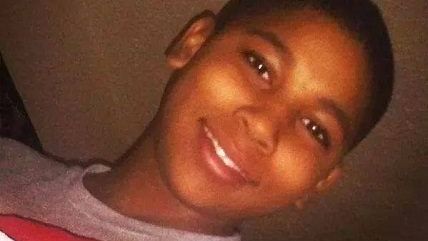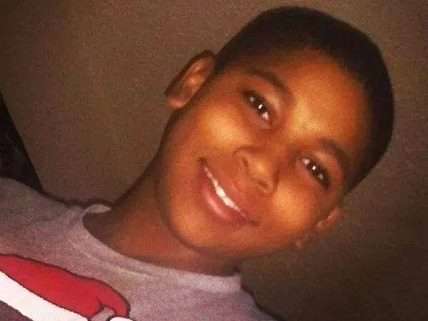We Live in a World Where Experts Say the Shooting of Tamir Rice Was 'Reasonable'
The cop's life is the only one that matters, even if the threat is nonexistent.


When a grand jury decides whether to indict officers Timothy Loehmann and Frank Garmback for the murder of 12-year-old Tamir Rice in a park in Cleveland last winter, they will consider two independent reports, commissioned by the prosecutor's office, which reached the same conclusion: the use of deadly force was "objectively reasonable."
This means that under the law, in the opinion of two investigators, Loehmann did nothing wrong when he shot a teen—who was armed with only an airsoft gun—within seconds of encountering him.
According to the first report, compiled by S. Lamar Sims, a Colorado prosecutor:
"There can be no doubt that Rice's death was tragic and, indeed, when one considers his age, heartbreaking. However, for all of the reasons discussed herein, I conclude that Officer Loehmann's belief that Rice posed a threat of serious physical harm or death was objectively reasonable as was his response to that perceived threat."
And the second report, written by a retired FBI agent named Kimberly Crawford:
"According to the Supreme Court, the standard that must be used to evaluate a law enforcement officer's use of deadly force is one of objective reasonableness. The question is not whether every officer would have reacted the same way. Rather, the relevant inquiry is whether a reasonable officer, confronting the exact same scenario under identical conditions could have concluded that deadly force was necessary. Based on the proceeding discussion, and in light of my training and experience, it is my conclusion that Officer Loehmann's use of deadly force falls within the realm of reasonableness under the dictates of the Fourth Amendment."
People who have seen the full video footage, or read about the other troubling details, might wonder how anyone could possibly reach the conclusion that the shooting was justified. To review: a tipster told the police dispatcher that Rice was playing with a "probably fake" gun, but this detail was not relayed to the responding officers; rather than approaching from a distance, Garmback parked his vehicle nearly on top of Rice; Loehmann—an officer-in-training who was fired from a previous police job because of incompetence with firearms—pulled the trigger before Rice could properly react to the situation, ostensibly because the teen reached for the fake gun he was carrying inside his waistband; both cops allowed Rice to bleed on the ground for several minutes, doing nothing until an FBI agent turned up; they prevented Rice's sister from helping him, instead handcuffing her and placing her in the squad car while her brother's life drained away.
But according to the reports, it doesn't matter whether the shooting seems justified in hindsight—it only matters whether a reasonable officer, in the same position as Loehmann, would have reacted in the same way. In other words, the multitude of factors suggesting the cops should have refrained from shooting Rice add up to nothing. The only thing that matters is Loehmann's own subjective view of the threat to his own person. That threat was nonexistent, but Loehmann didn't see it that way, which makes the shooting justified in the opinion of the only person who counts.
Over at his blog, Simply Justice, Scott Greenfield laments that the conclusion in the Rice case is foregone because of the Supreme Court's deference to paranoid policing:
By eliminating from consideration any bit of information that didn't support the murder of Tamir Rice, you end up with a report that says killing him was reasonable. By applying caselaw that bends over backward to preclude any view that wasn't the killer's, there can be only one objectively reasonable conclusion. …
You don't see it? I don't see it? We don't count. We're not trained to see what a cop's eye sees.
Greenfield points out that despite the investigators' exhausting efforts to explain away inconvenient details as irrelevant to Loehmann's parsing of the situation, there is still one nontrivial fact that goes unaddressed: the cops never gave Rice verbal instructions before killing him:
Even so, there was one stumbling block that Sims and Crawford were constrained to fudge, that in the one to two seconds between Loehmann jumping out of the car and leaving a dead boy on the ground, there was no shout of "freeze" or "hands up." There was no order with which Tamir Rice refused to comply.
Much like the John Crawford case—in which an officer gunned down a man for carrying a pellet rifle inside a Wallmart that sold those very weapons—the totality of the circumstances just don't apply. Crawford's killers claimed they gave him orders that he ignored, but the video evidence established that they shot the man immediately, just like Rice. Crawford's grand jury declined to indict the cops, even though Crawford's family could credibly show that the officers lied about their justification for shooting him.
Those who want justice for Rice should gird themselves for disappointment. In the eyes of the law, only one person's life matters—irrespective of the actual threat to that life—and it certainly isn't the 12-year-old boy's.

Show Comments (286)